- After 3 winter stratifications the first seedlings appeared Summer 2023
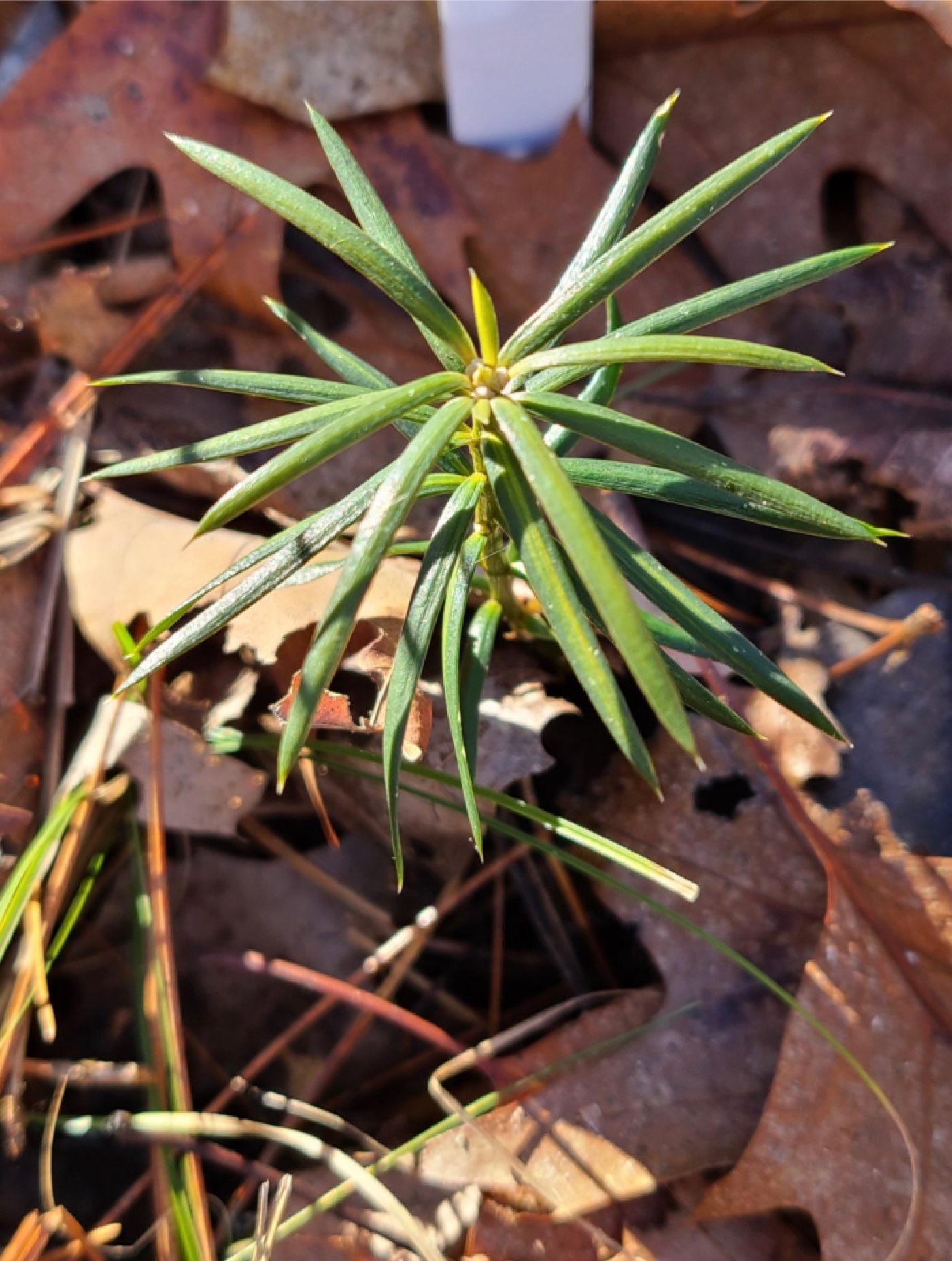
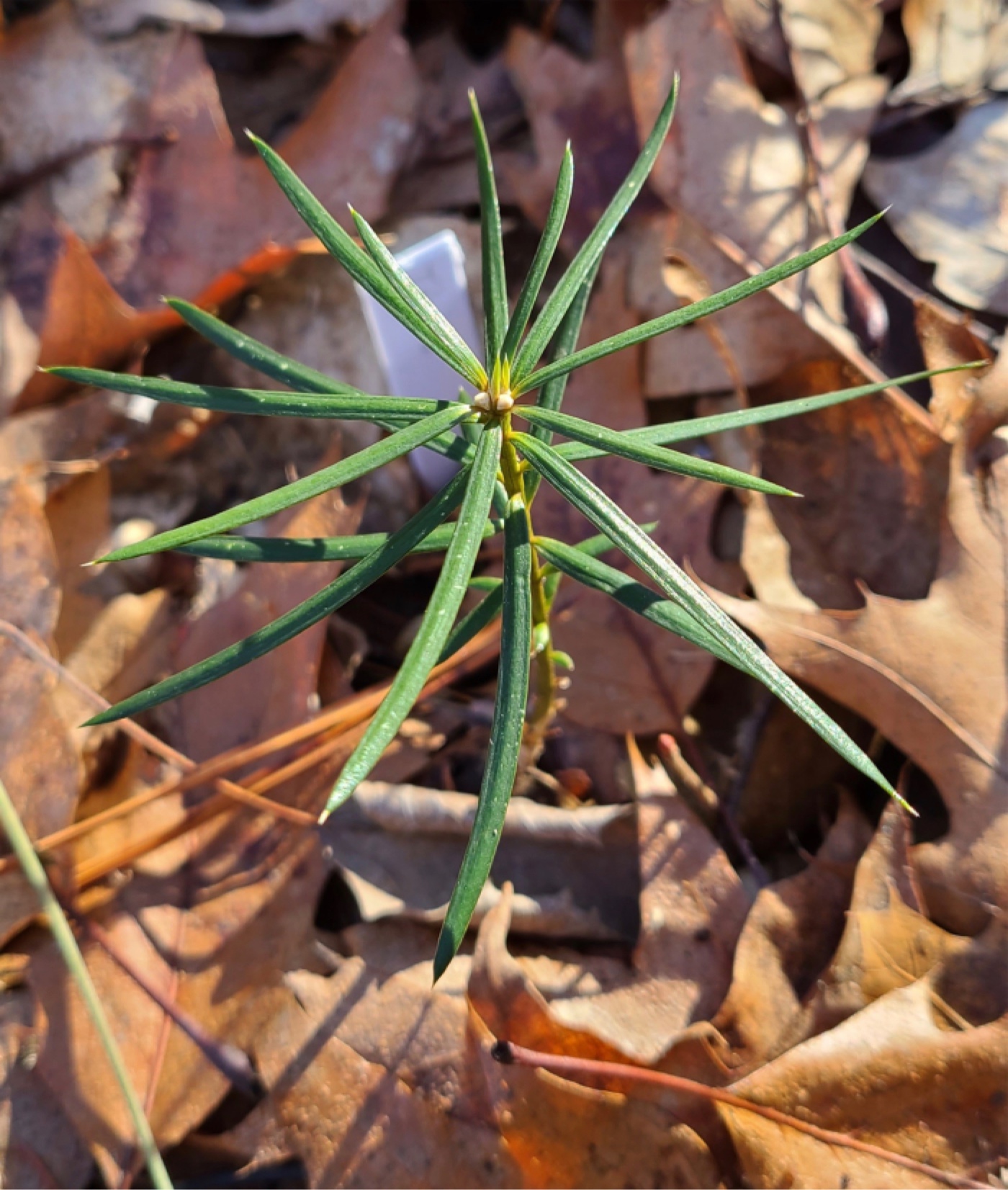
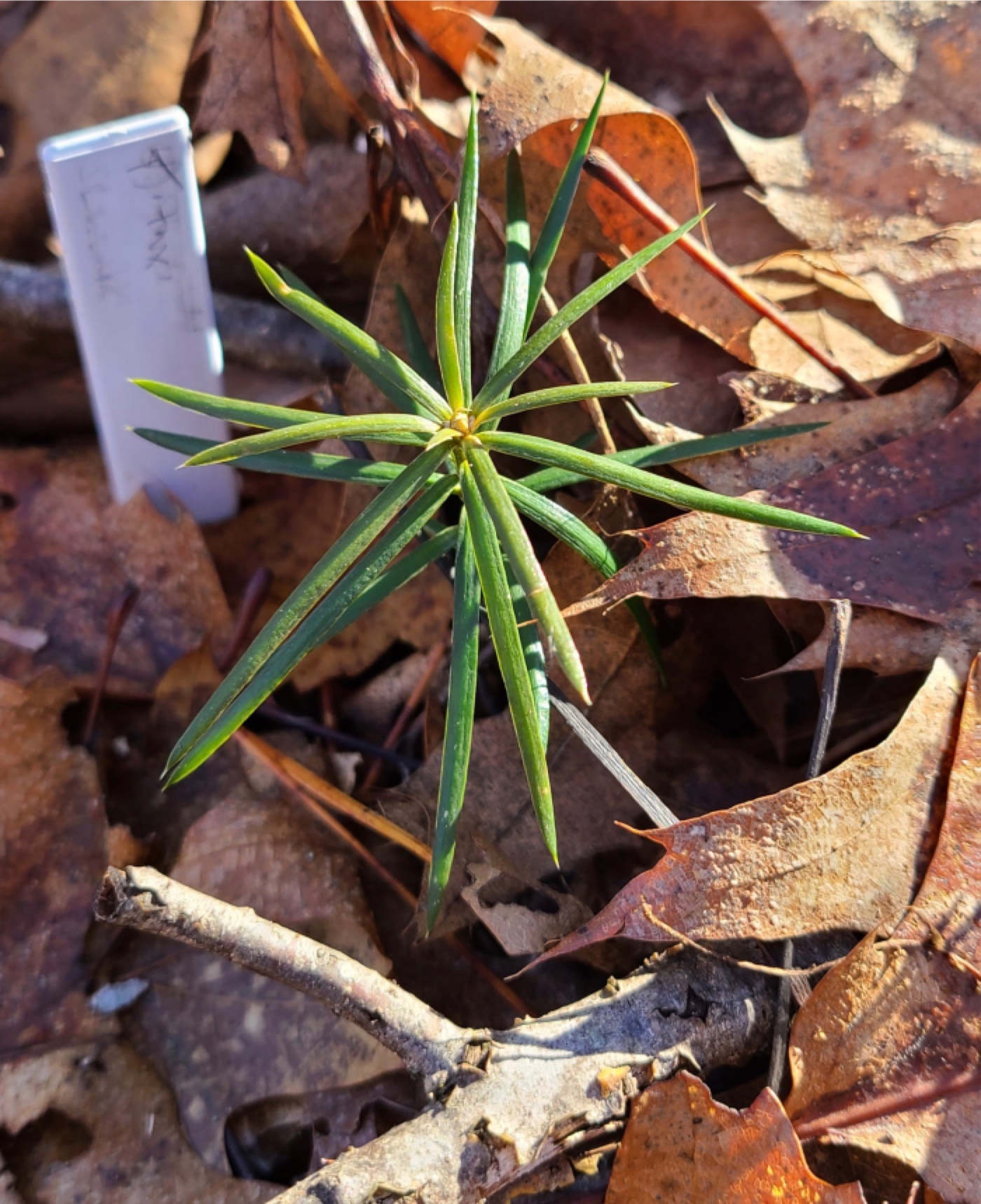
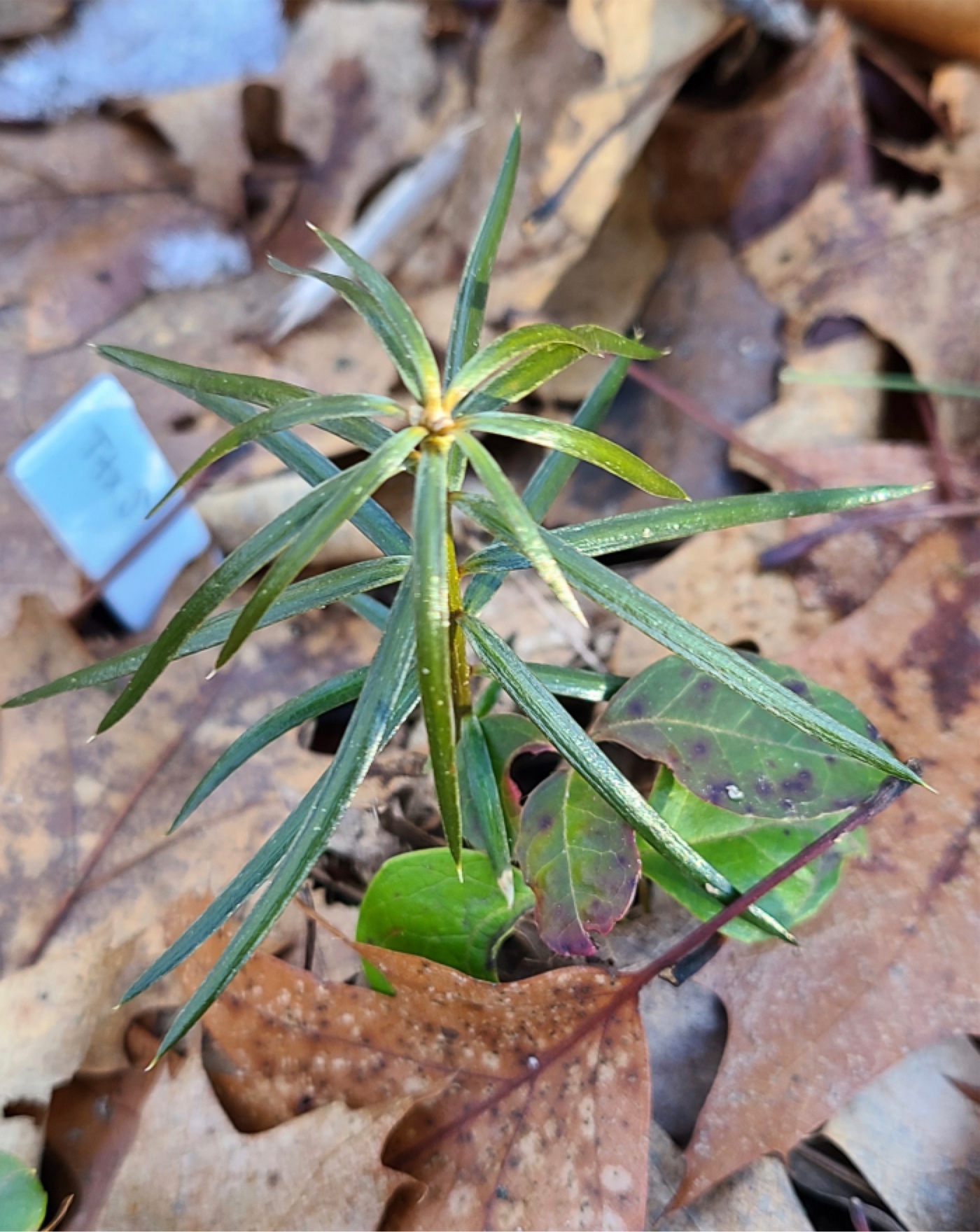

Photos above all taken late February 2024. The snow is gone!
MIKE HEIM wrote: "Three and a half years ago, I cleaned the fresh Torreya seeds (2020 harvest in central North Carolina) and immediately planted them in situ into the woods exclosure. It was fun last summer watching the first seedlings appear one by one! Only a fraction of them (5; photos above) have come up so far. It will be exciting this coming summer to see how many more might appear!"
"Seedling #4 (above) just has a glossy cuticle shining in the sun, but #5 came up late and was slightly injured by the first frost. That's the only one with any sign of injury so far. We did have -16F, but they were covered in snow. -6F is the coldest they've been exposed to."
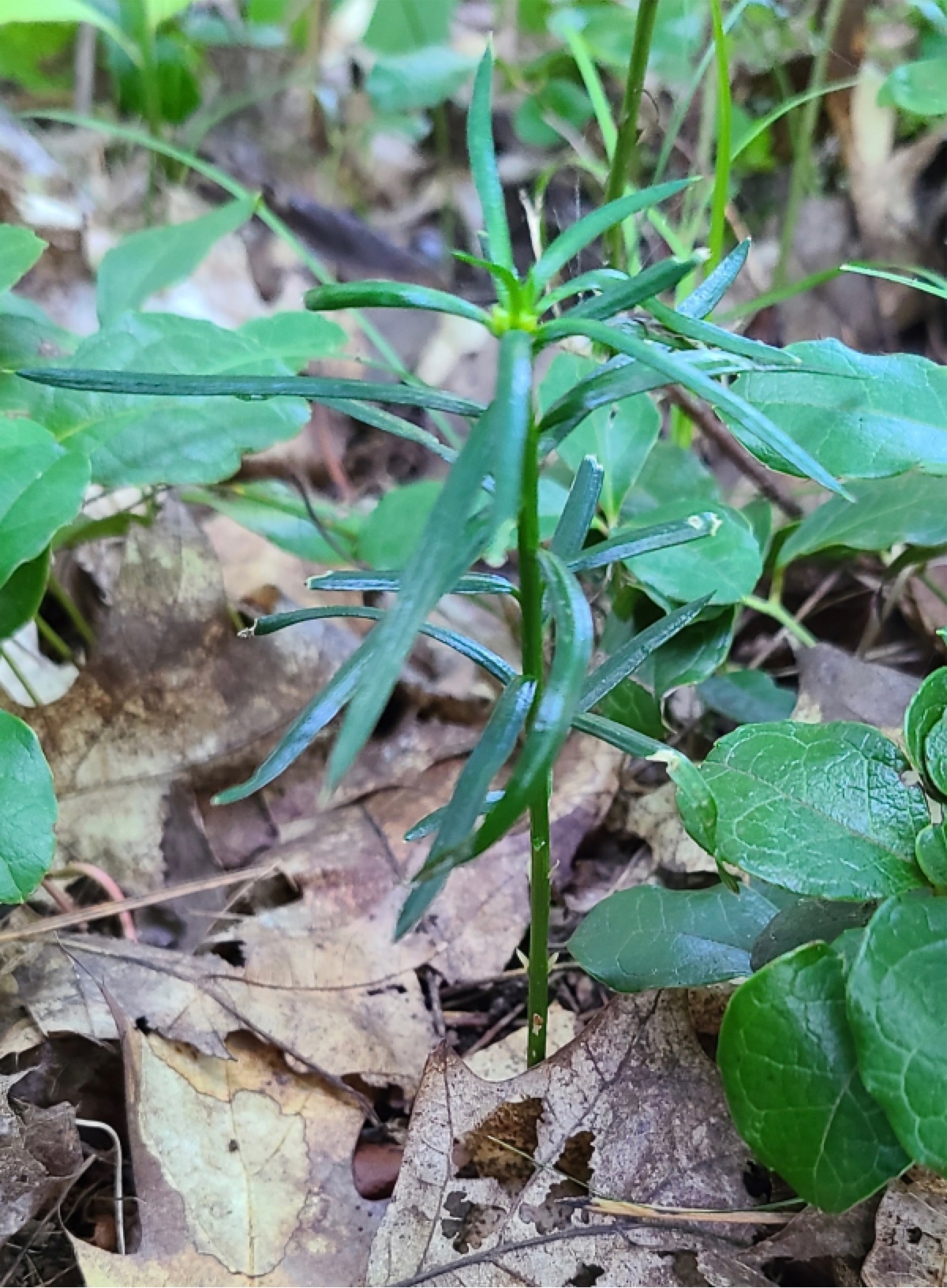 |
 |
|
• 25 AUGUST 2023: - Mike Heim took photos of new seedlings that emerged from seeds planted directly into his forest (within a fenced deer exclosure). He wrote:
"I just found 4 T. taxifolia seedlings up from the seed I planted in situ November 2020. They sure are tall; some up to 6 inches!
"I doubt they will harden in time for winter, but it would be exciting if just one did."
EDITOR'S UPDATE FEBRUARY 2024: All of them survived the winter. Only the last of a total of 5 to emerge suffered any winter damage. (See note above.) |
• NOVEMBER 2022: - Mike Heim took photos of another eastern USA native plant, Galax — which, at his home in Wisconsin, is now far outside its range:
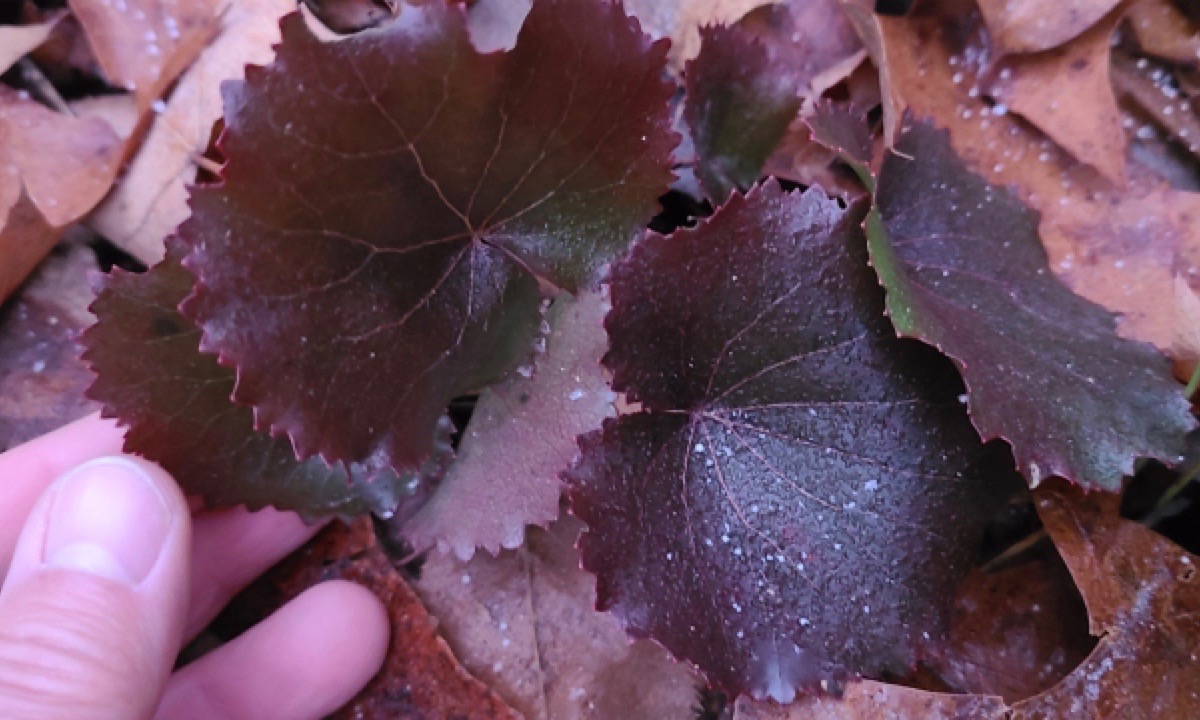
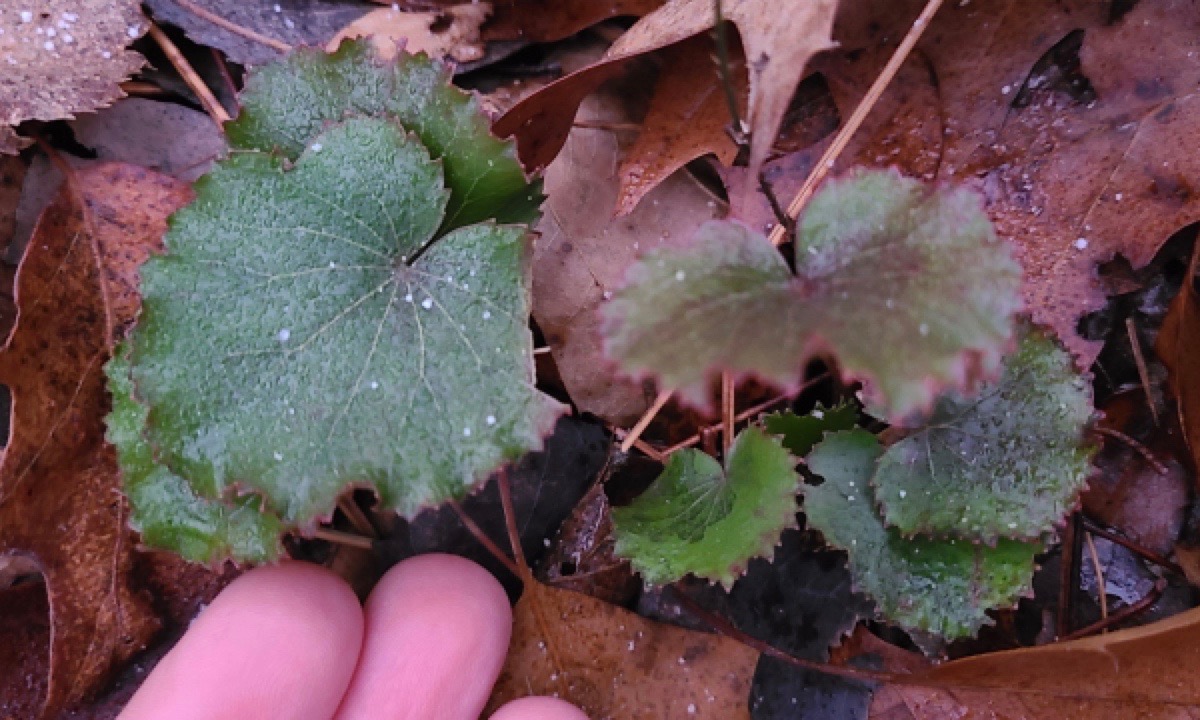


• OCTOBER 2022: - Mike Heim took photos of two new seedlings that emerged from seeds planted directly into his forest (within a fenced deer exclosure). He wrote: "It's taken 2 winters for them to germinate. Probably more on the way next year."
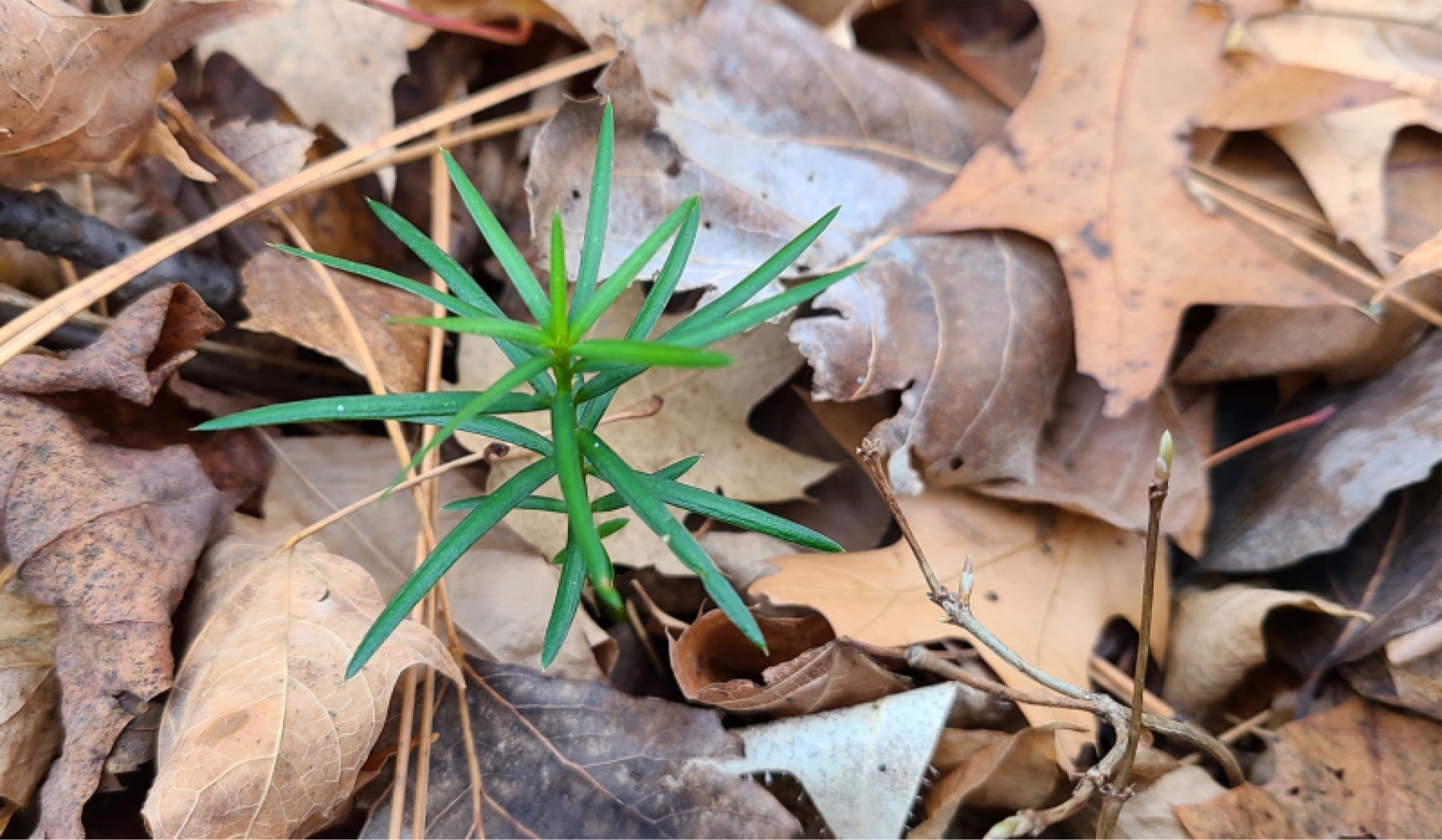
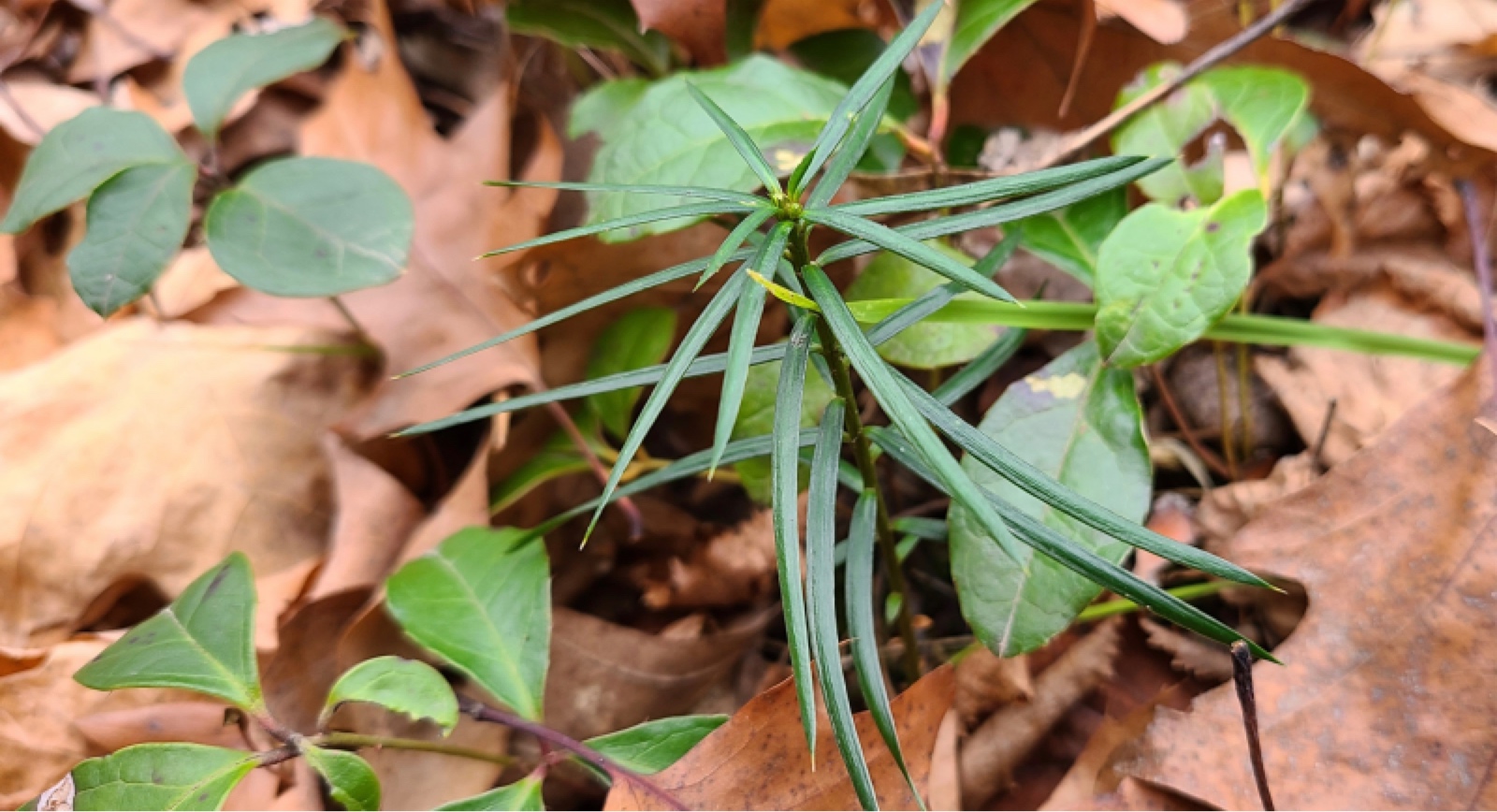
• APRIL 2022: - Mike Heim reported that February 13 the temperature dipped down to -29F. On April 3, he sent 3 photos of FLORIDA TORREYA and one photo of FLORIDA YEW (his boot alongside the yew):
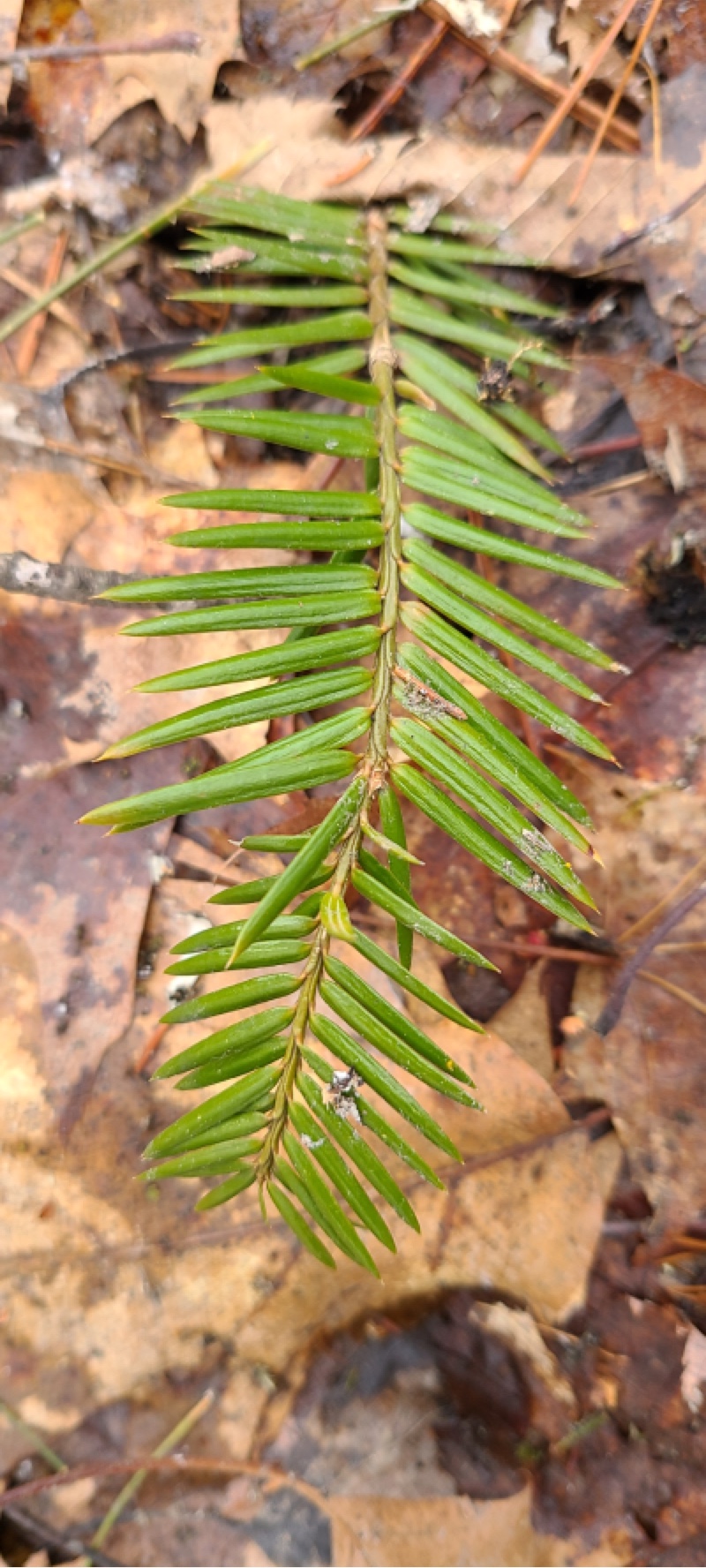
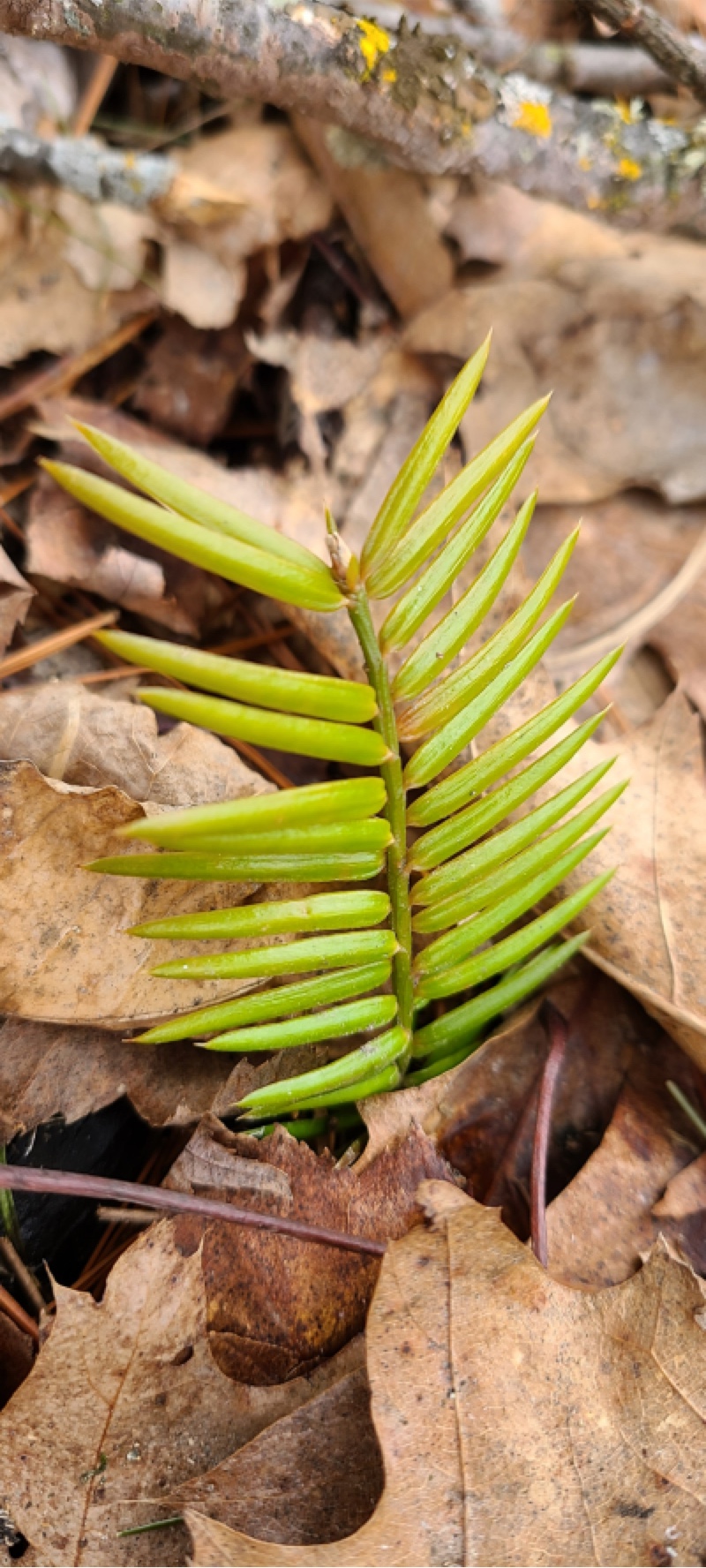


• NOVEMBER 2020: - Mike Heim was sent 100 seeds (50/50) from the Clinton and Mt. Olive seed-collecting expedition made by Joe Facendola October 31: On November 9 Mike emailed, "The seeds are all planted. I alternated the two sources along the footpaths — in the pouring rain. That's determination! Hopefully I avoided the vole runways." Note: He planted the seeds within his large, fenced deer exclosure, beneath a deciduous canopy.
• OCTOBER 2020: - Photos of Mike's forest plantings of America's northern-most native magnolia (Cucumber Magnolia, well north of its native range) and the pair of "living fossil" trees that used to be in North America: Dawn Redwood and Ginkgo.
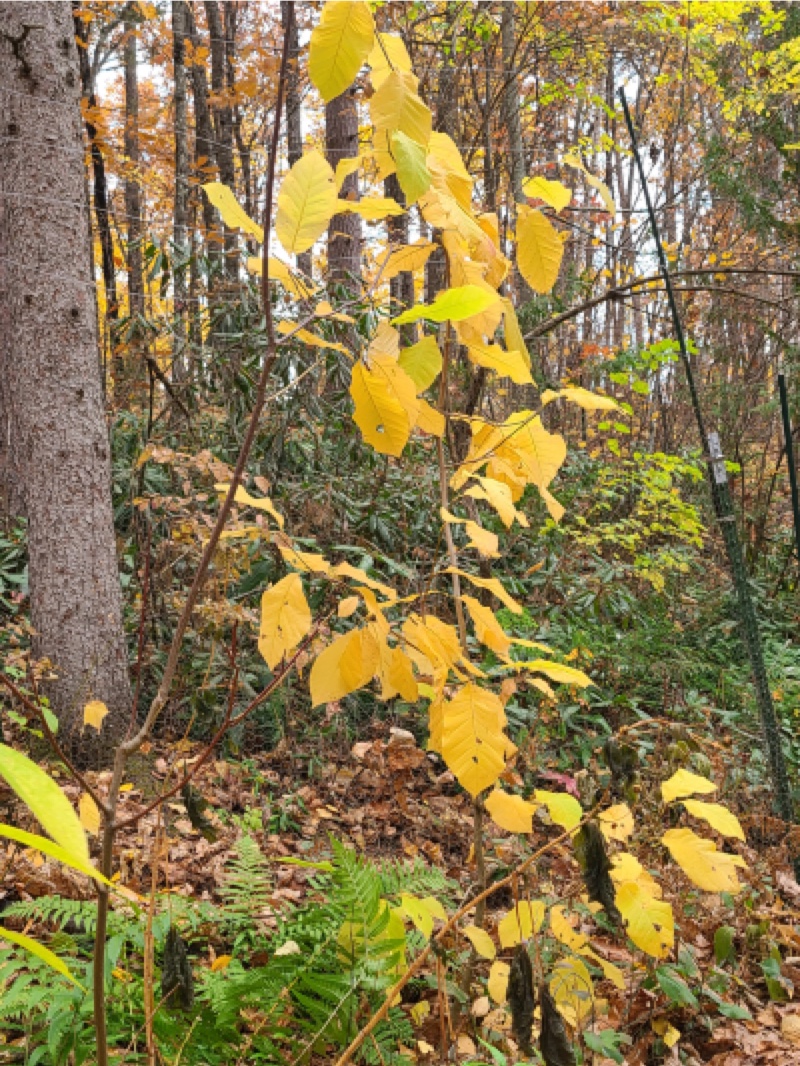
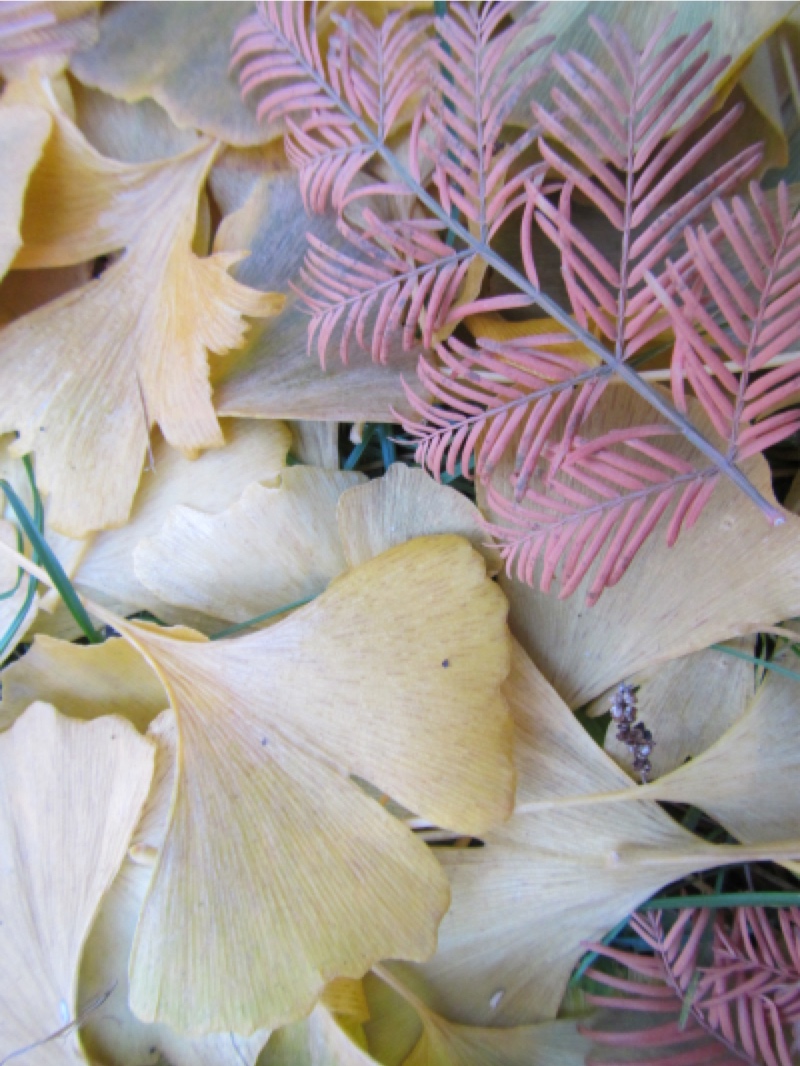
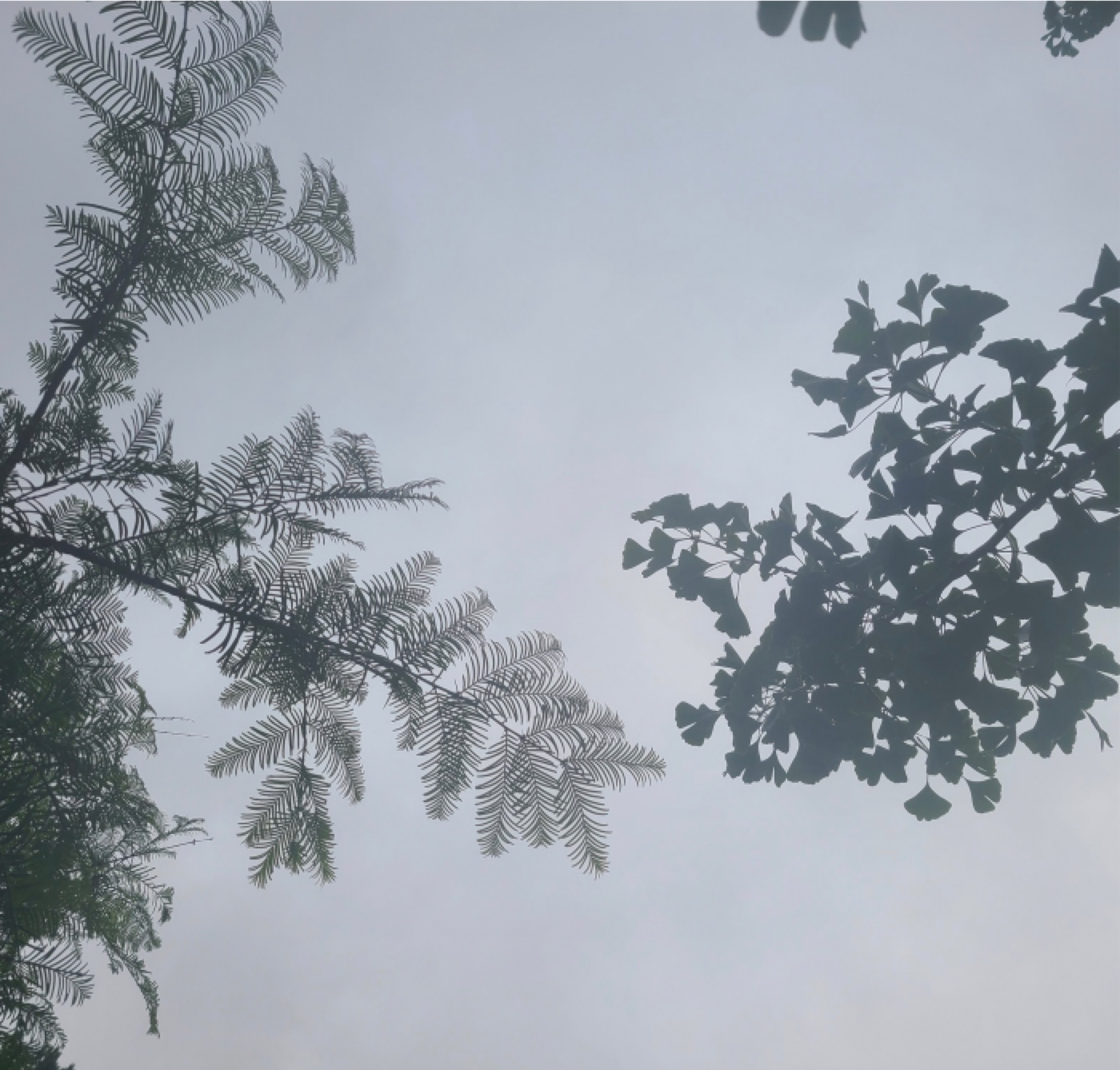
More photos below: Two subcanopy woody plants of eastern North America — substantially north of their native range: Sweetshrub (Calycanthus floridus) and Flowering Dogwood (Cornus florida).
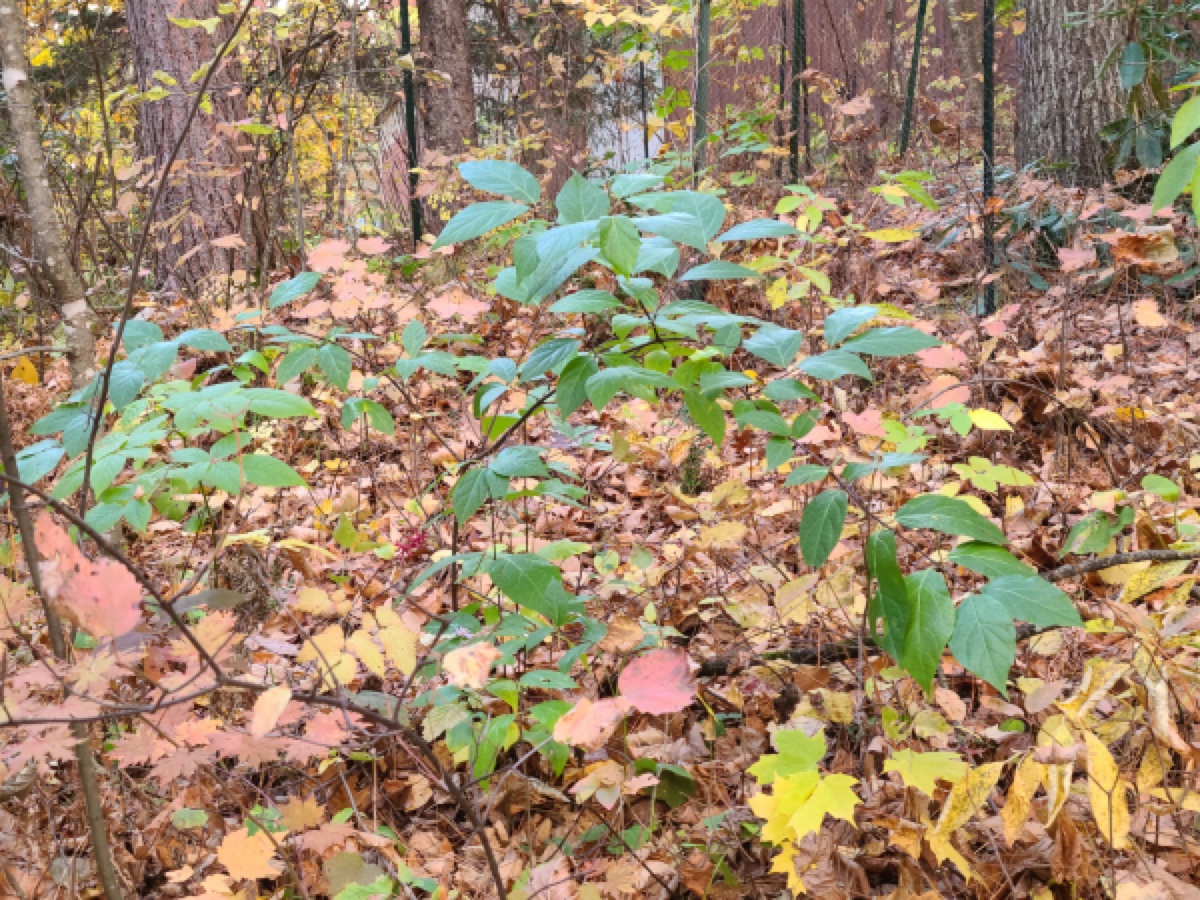
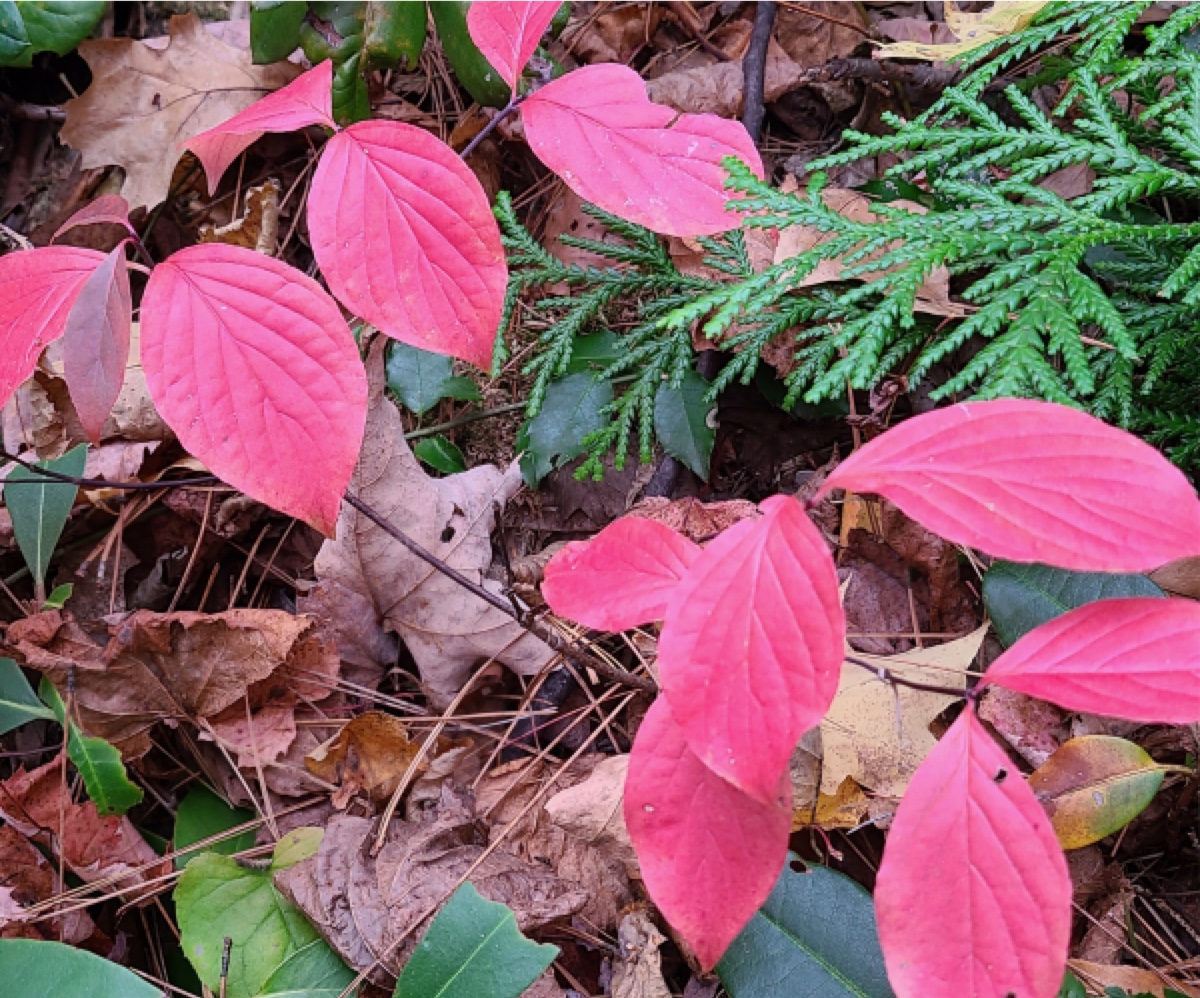
• SEPTEMBER 2020: - "It may interest you to know that I am growing pure American chestnuts that are blight resistant. They originated as seedlings from Michigan. One of them did get the blight many years ago, but the others nearby never did and are gorgeous trees. I understand that the USFS is monitoring small stands of chestnuts in KY, etc. that have escaped the blight, which is a little known fact to most people."... "By the way, after many valiant attempts, I finally got a couple of pawpaws to survive here.
• NOVEMBER 2019 - New germination of a free-planted seed + early winter report
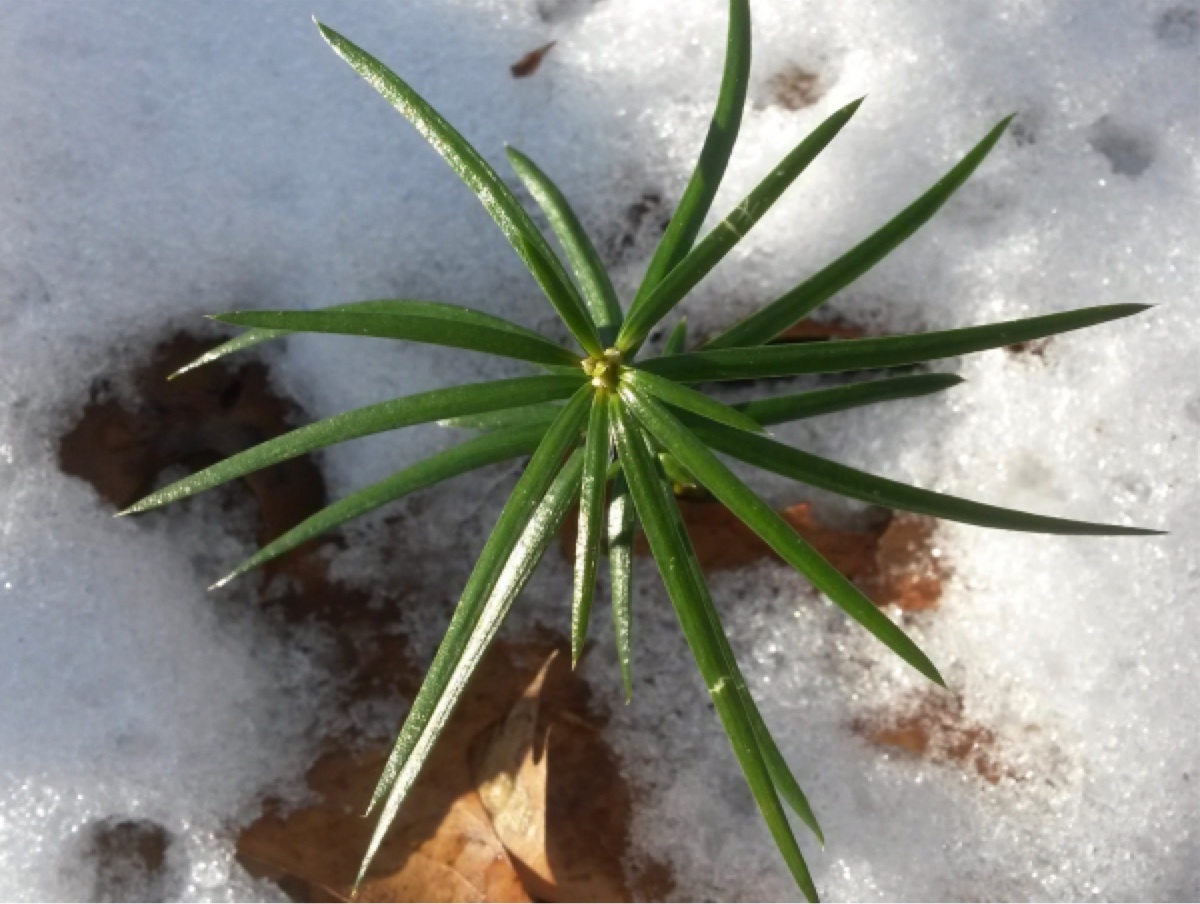
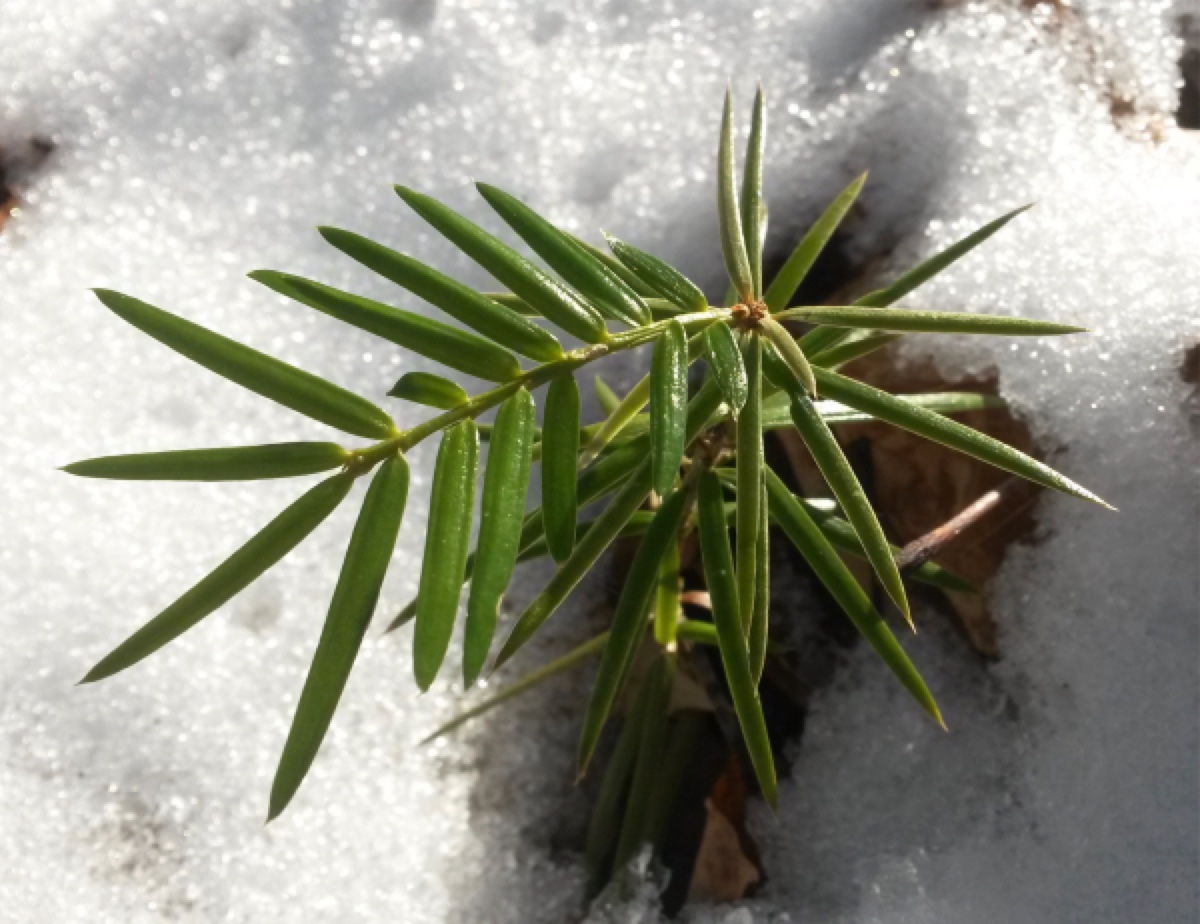
Mike Heim writes, "Thought you might like an update on the Florida torreyas way up here in northern Wisconsin. It's all good news.
PHOTO LEFT (Nov 24): This past summer one of the seeds germinated that I planted in situ two years ago in the woods. I find it interesting that the only one to germinate so far did so next to a wild ginger (Asarum shuttleworthii) division that I transplanted from the western North Carolina mountains a couple of years earlier. Just speculating, but perhaps something in that soil triggered germination, whether it be soil fungi/microbes or exudates from the ginger roots. Only time will tell if there's any merit to this idea, when and if the others germinate.
PHOTO RIGHT (Nov. 24): This one is from the native Georgia population that has been growing here without injury for several years. Last winter it survived under only a couple of inches of snow at -36F. This fall both of these plants were exposed to -6F on November 12th, which is exceptionally early for such cold. There was no snow whatsoever. As you can see, the torreyas were not fazed by this.
Editor's note: Compare photo above right to photo below right. The July photo shows the delicate new growth, which is hardened off and glossy in the above right photo.
• JULY 2019 - A Florida torreya seedling after 3 winters in northern Wisconsin.


Mike Heim writes, "This was its third winter here and I don't give it any protection from the cold besides what Mother Nature provides. This past winter the temperature dropped to -36F with only 5 or 6 inches of snowcover. This last surviving GA torreya seedling was protected by snow, but not much — maybe an inch. This was our coldest winter since the 1990s.... This Torreya is the only survivor of two originals pictured in the March 2017 report below. (This is the seedling pictured in the left photo of 2017.)"
HOWEVER, "the June 2017 photos (below) were of a different, larger seedling. It died for no apparent reason. I wish I would have checked for rodent damage at the time, but only much later read about this problem." Deer herbivory is ruled out because an exclosure surrounds the plantings of Florida Torreya and Florida Yew.
• APRIL 2019 - Mike Heim sent an email report to Connie Barlow on 2 April 2019:
"I'm waiting for the snow to finally melt off of the T. taxifolia seedling and cuttings. The Taxus floridana all are in perfect condition after a -36F winter with not a whole lot of snow covering them."
• JUNE 2017 - The biggest of the two Torreya taxifolia seedlings (photo below), as of mid-June 2017:
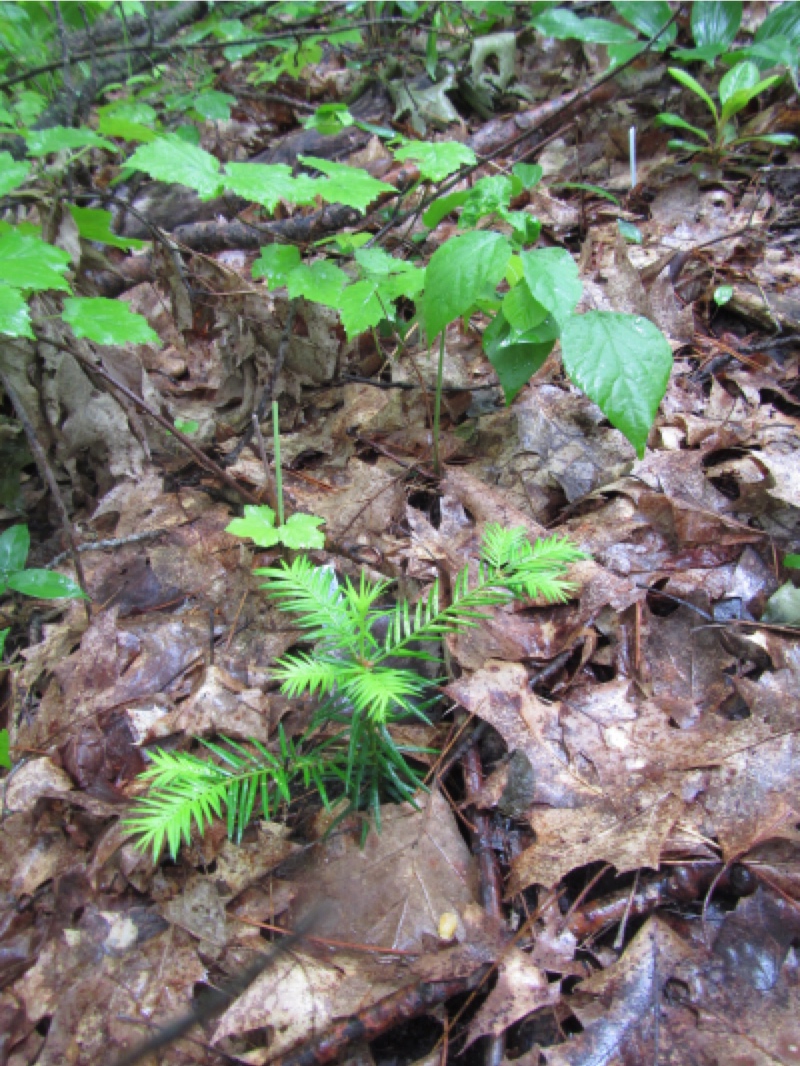

• MARCH 2017 - It has been an extraordinary winter here. On December 18th the temperature dropped to -25F with only several inches of snowcover. Heavy rainfalls resulted in the unprecedented disappearance of the snowpack in February. Since then the bare ground and uncovered plants have had to endure temperature extremes seesawing back and forth between -5F to almost 60F and back again. The sustained strong damaging winds are also unusual.
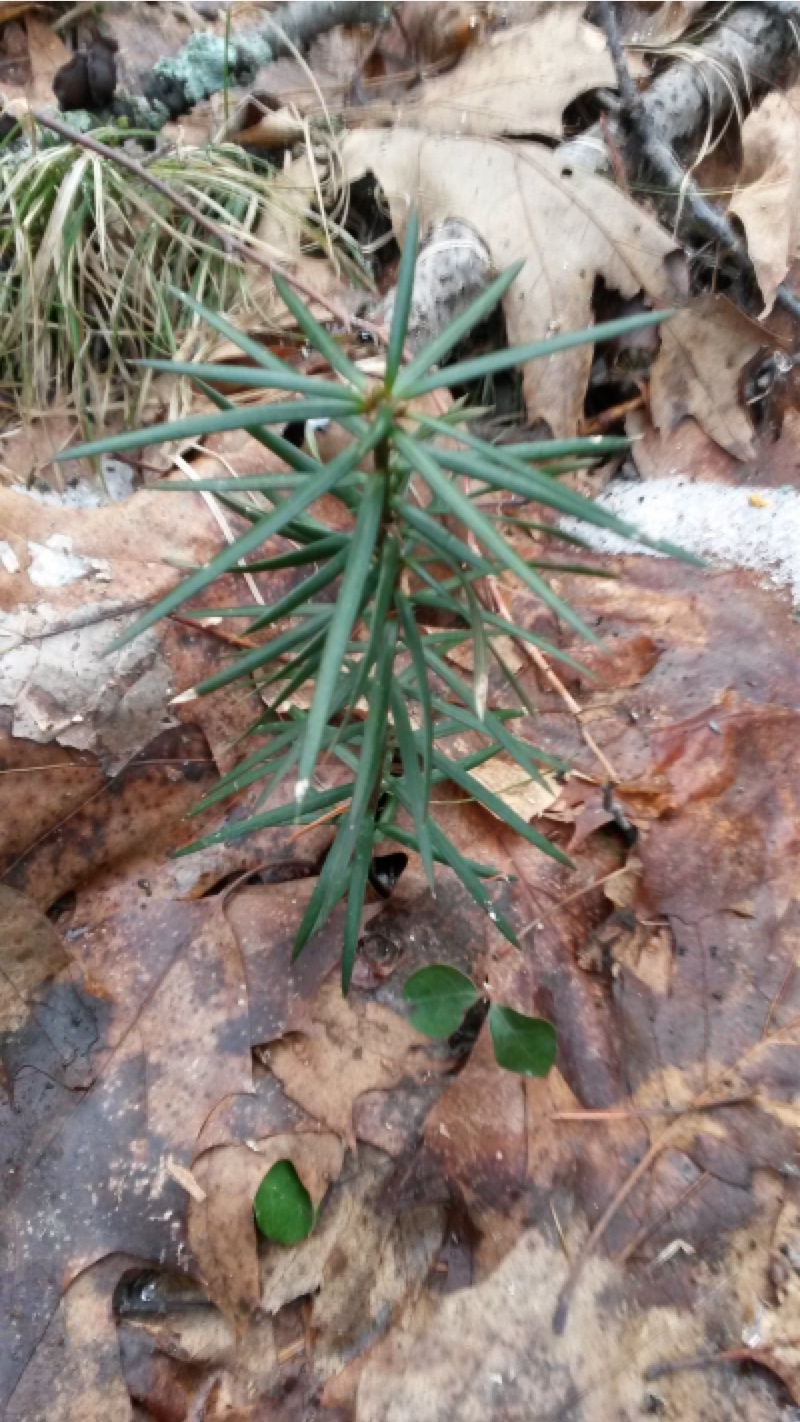 |
|
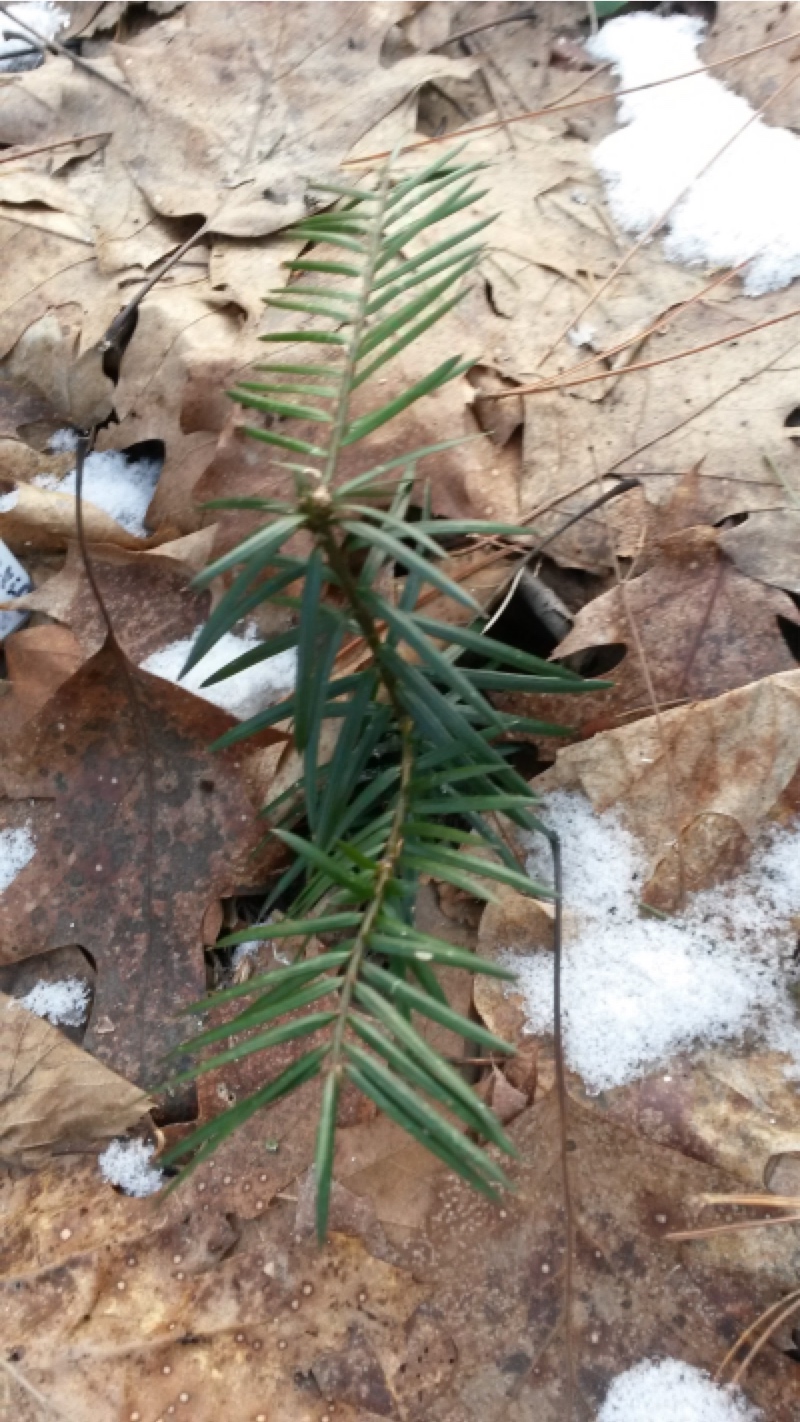 |
|
PHOTO LEFT: Two of three potted seedlings of Torreya taxifolia, survived their first winter after being planted outdoors.
_________
After having his rooted cuttings of Torreya taxifolia die during their first Wisconsin winter in 2010, Mike decided to plant specimens that had germinated from seeds (and therefore would have better root systems).
Summer of 2016, Mike obtained 3 potted seedlings, donated by Dawes Arboretum (Ohio) from seeds sourced by Torreya Guardians (Georgia provenance). One died in the spring (something about the microsite perhaps) and as you can see, the other two are thriving.
|
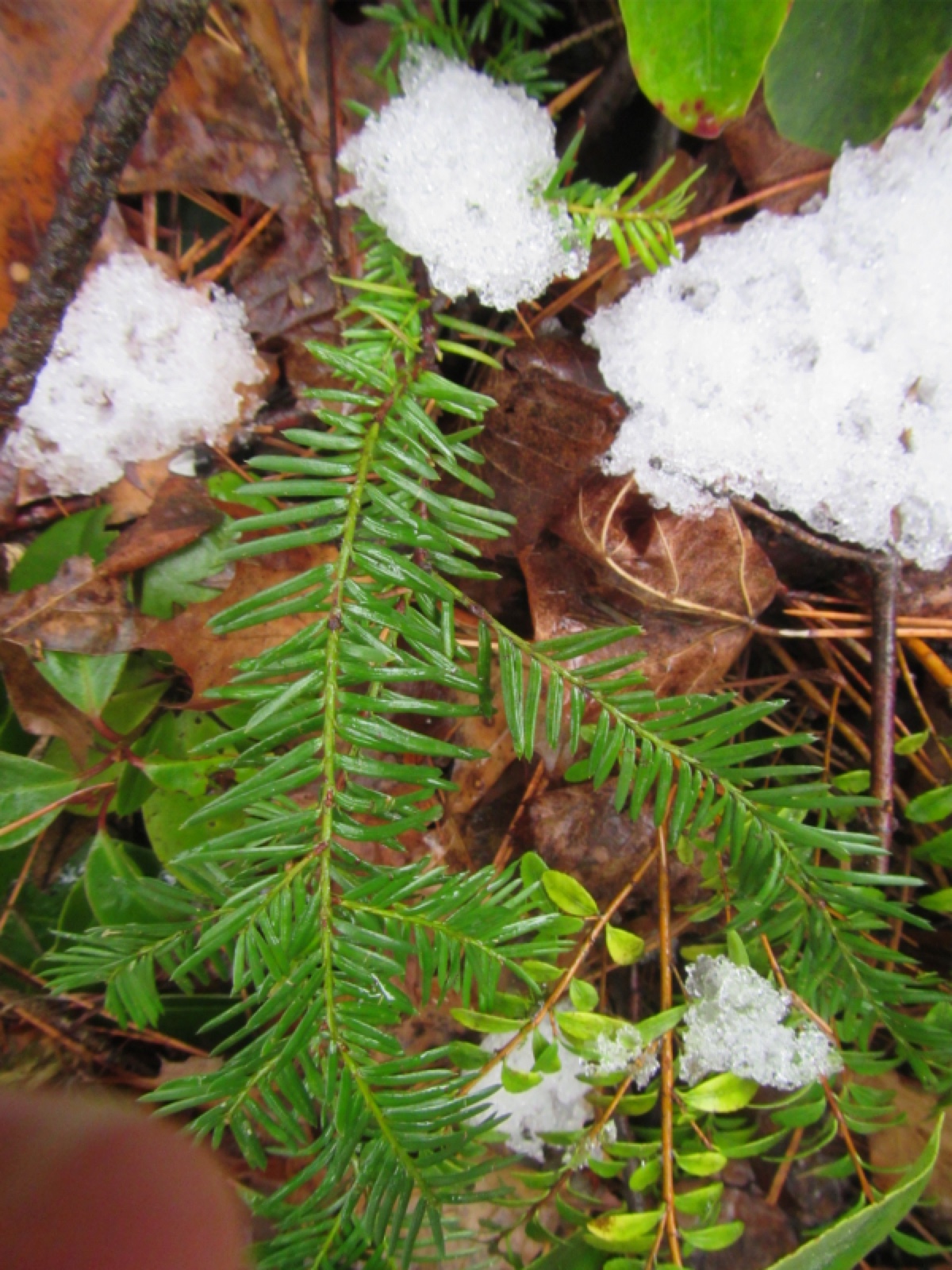 |
|
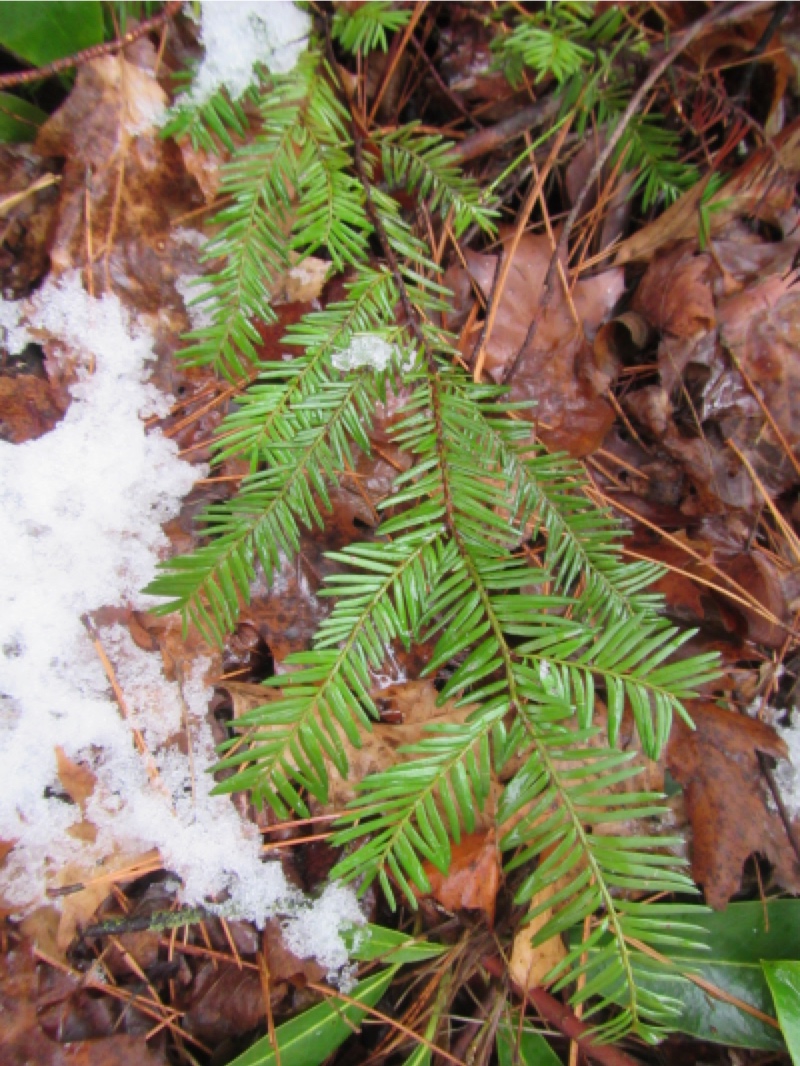 |
|
• MARCH 2017 (continued)
LEFT AND BELOW: The Florida yew rooted cuttings (Taxus floridana) pictured in the 2010 photos below are still alive and growing.
Because they were rooted cuttings (not grown from seed) they will retain the horizontal growth form of the lateral branch cut from their mother tree.
A ground-hugging growth habit may be very advantageous in the north woods of Wisconsin — and for two reasons. First, snow cover will likely bury and thus protect it from extreme episodes of cold. Second, the snow will hide it from the winter-starved deer.
|

 |
|
• APRIL 2010 - TORREYA
All of the
Torreya taxifolia ended up dying as spring proceeded.
Photo left is one example of a dead or dying Torreya.
|
 |
|
• APRIL 2010 (cont.)
LEFT: In contrast to the fate of Florida Torreya (dead at bottom of photo), the Asian species, Torreya nucifera, is thriving (green at photo top).
COMMENTARY - Funny it took until now (April 26, 2010) for the dying to become apparent.
Anyway, it was a good learning experience and shows that these highly endemic species became that way for a reason during the Pleistocene or perhaps even before.
On the other hand, maybe their northern populations were eliminated by
environmental change and only the less hardy southernmost ones survived.
Guess we might never know.
The good news is that several Torreya nucifera (Asian species) came through in perfect shape! The box huckleberries also came through this winter splendidly. My biology students collected baseline data on them last week and I'm thinking they'll put on lots of new growth and runners this summer — if the drought doesn't stay too severe.
|
 |
|
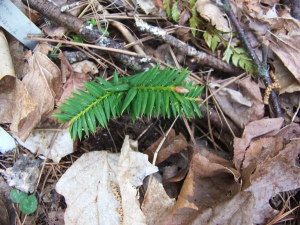 |
|
• APRIL 2010 (cont.)
The Japanese species of genus Torreya, Torreya nucifera radicans, seems to thrive on the property.
|
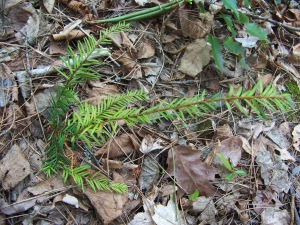 |
|
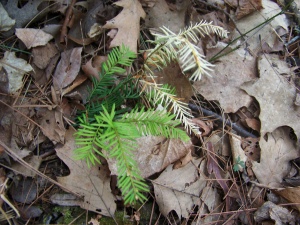 |
|
• APRIL 2010 (cont.)
Taxus floridana post-winter.
Right-most shows more damage from exposure.
|
ABOVE (2 PHOTOS): Florida Yew rooted cutting after its first winter. This species is much more site-tolerant than Torreya and was exposed to minus 12F without injury.
 |
|
• MARCH 2010
Torreya taxifolia rooted cutting after its first winter. It was covered by
snow for 3.5 months.
The plants only survived the winter on steep slopes.
|
Mike's ongoing photos and reports of other Tertiary-age genera that were either extirpated from Wisconsin or fully extirpated in North America (surviving thru the cold times only in Asia) are posted on a separate webpage on this site.
Also on that page is his PHOTO-ESSAY: "Assisted Migration of Appalachian Species to Wisconsin."
• Visit Mike's PHOTOS & REPORTS of ASSISTED MIGRATION plantings: HERE.